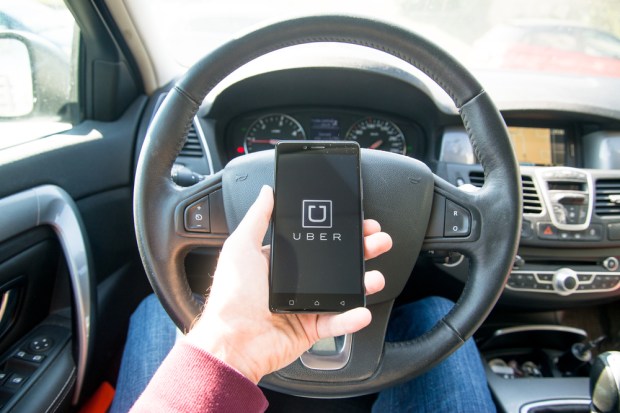How The Gig Economy Is Making Disbursement Tools More Important

There are many ways to quickly hail a ride through platforms such as Uber — or have a freelancer complete a task through Fiverr. But payments for gig workers can be a completely different story.
Gig workers aren’t getting paid as quickly as they have been in the past. The most recent PYMNTS’ Gig Economy Index, for example, found that 51 percent of gig workers surveyed in the fourth quarter of 2017 reported being paid within one week of rendering their services.
That finding marks a drop of 12 percent from the previous quarter and suggests that more gig workers have to wait longer than a week to receive their earnings, according to the PYMNTS Disbursements Tracker.
Still, companies are approaching gig payments — along with peer-to-peer (P2P) payments — in new ways to help speed up disbursements. Here’s how companies are sending payments and allowing them to be sent.
Just over 80 percent — or 82 percent — of surveyed financial institutions (FIs) anticipate SDA debit volume will grow at a rapid or steady rate in next six to nine months. The volume of same-day automated clearing house (ACH) transactions is expected to rise over the coming months. According to a NACHA survey, 82 percent of financial institutions surveyed anticipate that Same Day ACH debit volume will grow at a rapid or steady rate. A similar number of institutions — 78 percent — expect credit volume will grow at a steady rate over the next six to nine months. The survey was conducted in November and December of 2017 and included 22 FIs that represent 78 percent of the ACH Network origination volume. With the rise of Same Day ACH, FIs surveyed have not seen an increase in fraud. Previous surveys also found this to be the case.
Eight in 10 — or 80 percent of — American businesses employ independent contractors. And research reveals reliance on contingent workers is likely to increase. In an October interview with PYMNTS, Doug Politi, president of added-value services at ADP, explained that the rise of the gig worker population is forcing employers and payroll providers to address changing needs. “Some of our research has shown, particular[ly] with the underbanked and millennials, that the ability to help them ‘save them from themselves,’ relative to financial management, budgeting, savings and so on is in high demand,” Politi said. “In many cases, they’re struggling. And, as the labor market is tight, the ability to keep your workers engaged and satisfied along multiple streams, whether they’re a 1099 worker or a full-time employee, you’re going to hear a lot of the same pressures to make sure they’re satisfied — and payments is one of those ways to boost employee satisfaction for sure.”
Just over 60 percent — or 63 percent — of gig workers reported receiving payments within a week of rendering services as of Q3 2017. To help expedite the payment process, Uber does have Instant Pay, which allows riders to cash out their earnings up to five times each day — with a $1 minimum. Lyft, too, has a similar feature called Express Pay, which allows drivers to transfer their earnings to a debit card after reaching $50 in ride earnings, referrals and mentor payments — and pay a $0.50 transfer fee. And, when it comes to gig workers in general, 84 percent of survey respondents said they’d do more gig work if they were paid on the same day or the next day. So, when it comes to doing more work, speed (of payments) matters. Yet, only 17 percent of platforms are in a position to pay workers as the work is done.
Four in 10 — or 40 percent of Americans — have at least one P2P payments app on their smartphones. And the feature is integrated into other apps. WhatsApp, the messaging app that has a payments component, for example, is expanding the payments types it supports by rolling out the ability to support QR codes for payments. TechRadar reported the ability to offer monetary transactions via QR code is being enabled for users who are part of the Android beta, with a larger-scale rollout slated for the coming weeks. With the feature, users can send money with QR codes as long as they have WhatsApp Payments. The mobile app’s ability to support QR codes comes on the heels of the service adding a new feature called Send to UPI ID, which lets users send money to any UPI ID in India.
And 100,000 new Zelle accounts are opened per day, according to the company’s data. TechCrunch reported that Zelle processed more than 247 million payments last year, which marks a 45 percent jump from 2016. It handled a total of $75 billion in P2P payments in 2017. That marks a significant increase from the $55 billion it garnered the year before. Currently, the service, which was called clearXchange back in 2016, counts Bank of America, Wells Fargo and JPMorgan Chase as backers. In the summer of 2017, the firm said more than 30 banks in the U.S. were supporting the mobile payment service. Zelle introduced a standalone app after rebranding to Zelle in the fall of last year.
When gig employers do offer innovative payment options, workers take note. According to a 2017 report in TechCrunch, Uber said “hundreds of thousands” of U.S.-based drivers took advantage of the Instant Pay program following on the heels of the initial group of roughly 80,000 drivers who had signed up before Uber opened the program to all Mastercard, Visa and Discover debit cards.
